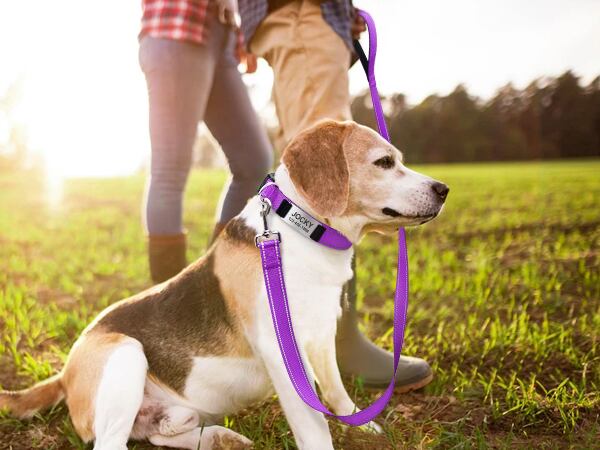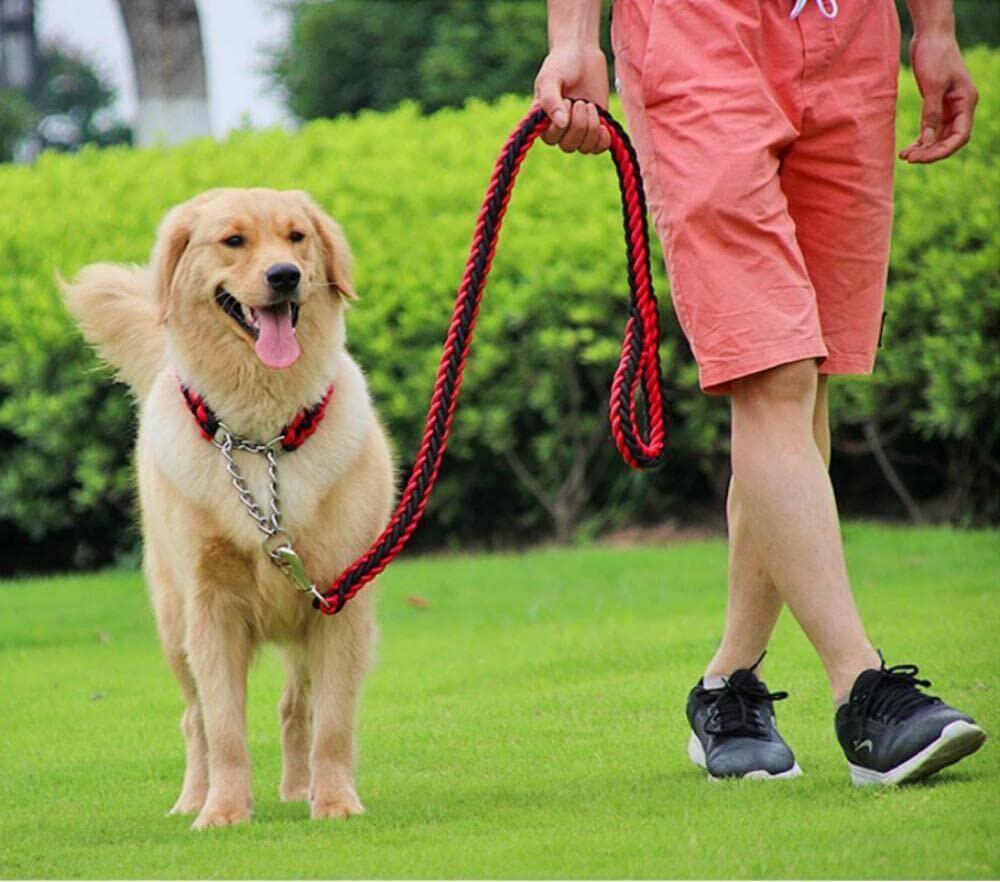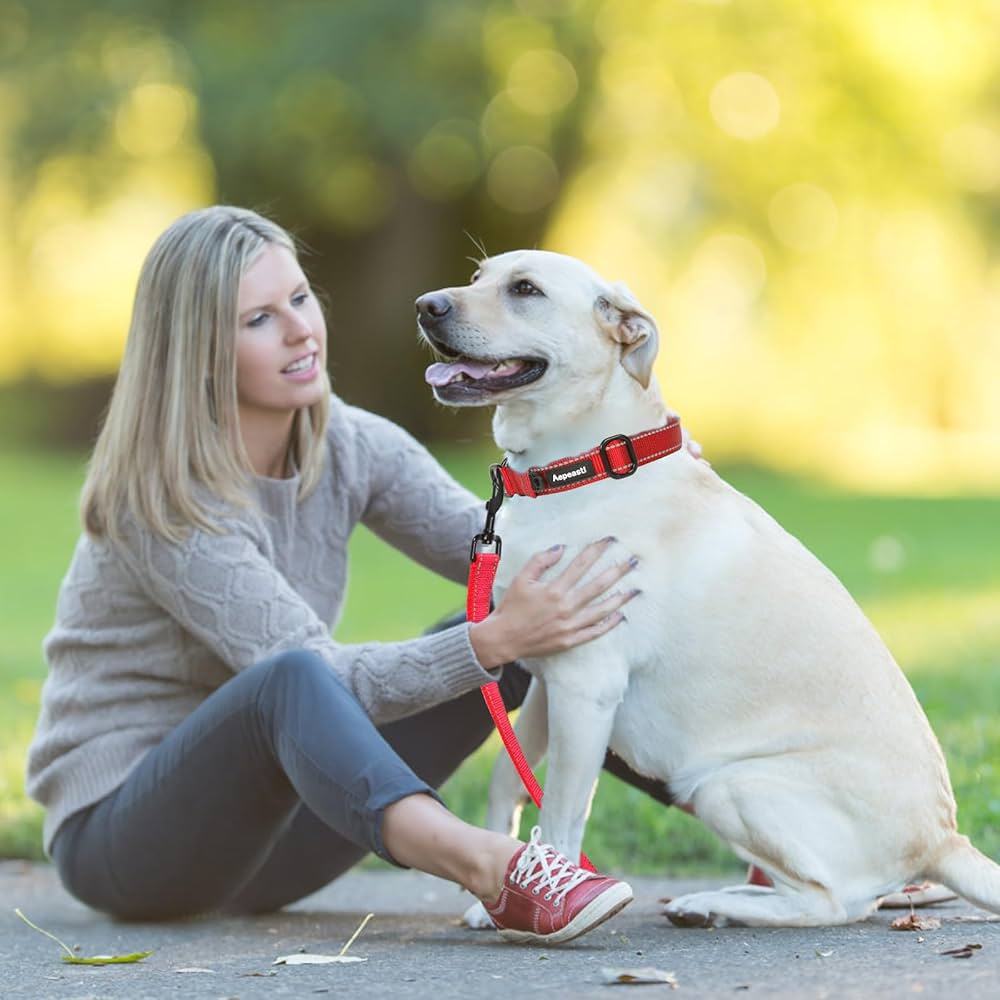
Introduction
Have you ever wondered how tight a dog collar should be? This is a very important question. Dog collars are more than just a fashion item. They help us walk our dogs, keep them safe, and show their name tags. But many dog owners don’t know how tight or loose the collar should be. A collar that is too tight can hurt the dog. A collar that is too loose can fall off. That’s why knowing the right tightness is so important.
In this article, you’ll learn how to fit dog collars the right way — not too tight and not too loose — just perfect. Let’s get started.
Why Do Dogs Wear Collars?
Dog collars help you control your dog. When you go for a walk, the collar connects to the leash. This keeps your dog from running away or getting into danger. Dog collars also hold ID tags. If your dog ever gets lost, someone can read the tag and return them to you.
Some collars, like dog training collars, are made to help teach your dog good habits. They can help your dog learn not to pull on the leash or bark too much. So, collars are not just for looks. They are tools that help keep your dog safe and well-behaved.
What Happens If the Collar Is Too Tight?
A tight collar is not safe. It can press into your dog’s neck and make them feel pain. It might make it hard for your dog to breathe. If the collar rubs too much, your dog can lose hair around the neck. The skin might turn red or get sore.
Your dog can’t say, “Hey, this collar hurts!” But they will show signs. If they are scratching at the collar, trying to pull it off, or acting upset when you touch it, something is wrong. A tight collar is not comfortable. You must check and fix it right away.

What Happens If the Collar Is Too Loose?
Now let’s talk about loose collars. These can also be a problem. A loose collar might slip off your dog’s neck. If this happens during a walk, your dog could run into the street or get lost.
Loose collars can also get caught on things like fences or furniture. This could hurt your dog or even choke them. That’s why it’s so important to make sure the collar fits just right—not too tight and not too loose.
How Tight Should Dog Collars Be?
Here’s an easy rule to follow: use the two-finger test.
That means you should be able to slide two fingers between the collar and your dog’s neck. If you can only fit one finger, the collar is too tight. If you can fit three or more fingers, it’s too loose.
This test works for all kinds of dogs. Whether you have a big dog or a small puppy, the two-finger test is a safe way to check your dog collar’s tightness.
How to Check the Collar’s Fit
Let’s go through the steps to check the collar fit:
First, place the collar around your dog’s neck. Next, buckle or snap the collar closed. Now, try sliding your pointer and middle fingers under the collar. Your fingers should fit snugly. Not too loose. Not too tight. Move the collar gently. It should stay in place but not press into your dog’s skin. If you see red marks or if your dog looks unhappy, it’s time to adjust it.
How to Measure for a New Collar
Before you buy a new collar, you need to measure your dog’s neck. Use a soft measuring tape. Wrap it gently around your dog’s neck where the collar will sit. Once you get the number, add extra space: Add 1 inch for small dogs. Add 2 inches for medium and large dogs.
This will help make sure your new collar fits well and feels comfortable. The best dog collars are the ones that are both safe and comfy.
Types of Dog Collars
There are many types of dog collars. Let’s look at a few of them and how they fit:
Flat Collars
These are everyday collars. They are simple and easy to use. Most dogs wear these for daily walks and ID tags.
Martingale Collars
These are good for dogs who try to slip out of their collars. They get tighter when pulled, but not too tight. They are great for safety.
Dog Training Collars
These collars help with training. Some make a sound, vibrate, or even give a small buzz. Always learn how to use these collars the right way. Never use them to hurt your dog.
Breakaway Collars
These collars open quickly if they get caught on something. They are safe for dogs who play a lot or stay at home alone.
No matter which collar you choose, always check the dog collars tightness to make sure it fits well.
Best Materials for Dog Collars
Good collars are made from strong but soft materials. The most popular ones are:
Nylon: It’s light, strong, and easy to clean.
Leather: It looks nice and lasts a long time. It can be soft and comfy, too.
Padded collars: These have extra cushion inside. They feel soft and won’t hurt the neck.
The best dog collars are the ones that do not rub the skin, pull the fur, or feel heavy.
When Should You Adjust the Collar?
You should check and adjust the collar often. Here are some times when you may need to adjust it:
Your puppy is growing fast. Your dog gained or lost weight. The collar looks worn or broken. Your dog just had a bath or haircut. Dogs change quickly. So should their collars. Always keep checking the fit to make sure your dog stays comfortable and safe.
Should Puppies Wear Collars?
Yes, puppies should wear collars too. But you need to be very careful. Their necks are small and soft. Pick a collar that is very light and gentle. And don’t forget—they grow fast! Check the collar every few days. A collar that fits today might be too tight next week.
Helping Your Dog Get Used to a Collar
Some dogs don’t like collars at first. That’s okay. You can help them learn to like it. Start by letting your dog sniff the collar. Then gently put it on for a short time. Give treats and praise. Take it off after a few minutes. Do this again and again. Soon, your dog will feel happy when the collar comes out. Make it a fun and kind experience.
Mistakes to Avoid with Dog Collars
Many dog owners make mistakes without knowing it. Let’s avoid these common ones:
Leaving collars too tight. Not checking the fit often. Using big, heavy collars on small dogs. Not changing the collar when the dog grows. Being a good pet parent means watching out for these little things too.

Signs the Collar Might Be a Problem
Watch your dog closely. They will tell you if something is wrong. Look out for:
Red skin or bald spots on the neck. Scratching at the collar a lot. Crying or barking when you touch the collar. Trying to get the collar off. These are signs that your dog is not happy with their collar. Make changes right away to keep them safe and healthy.
Can My Dog Wear a Collar All Day?
Yes, most dogs can wear collars all day. But there are times when you should take the collar off:
During sleep. When your dog is in a crate. During bath time or swimming. Always check that the collar is clean, dry, and smells okay. A wet or dirty collar can cause skin problems.
How Often Should You Check the Collar?
You should check your dog’s collar at least once a week. Look at the fit. Check for damage. Make sure the collar is not too tight. Also, look at your dog’s neck. Make sure there are no signs of rubbing or redness.
Checking the collar should be a regular part of your pet care routine.
Can Dog Training Collars Help?
Yes, dog training collars can help teach good behavior. But you must use them carefully. Some collars beep, vibrate, or give a little buzz to help dogs learn. These are okay when used for a short time.
Never use a collar to scare or hurt your dog. The best dog training collars are safe, gentle, and used with love.
FAQs
Q: How tight should my dog’s collar be?
A: You should be able to fit two fingers under it. That means it’s not too tight or too loose.
Q: Should my dog wear a collar all the time?
A: Most of the time, yes. But take it off at bedtime, during baths, or in the crate.
Q: How do I know if the collar is hurting my dog?
A: Look for red marks, scratching, or if your dog seems upset when wearing it.
Q: What is the best collar for a puppy?
A: A light, soft collar that fits well and can be adjusted as the puppy grows.
Q: Are breakaway collars safe?
A: Yes, they are great for dogs who play a lot or stay at home alone.
Final Thoughts
Dog collars may look simple, but they play a big role in your dog’s safety and comfort. A well-fitted collar helps you walk your dog, show ID tags, and even train them. But it must never be too tight or too loose.
Use the two-finger rule. Choose soft, strong collars. Check the fit every week. Watch your dog for signs of pain or problems. The best dog collars are the ones that your dog can wear happily every day.
Being a good dog owner means looking out for your dog’s comfort, safety, and smile. And it all starts with the right collar fit.
Let’s Stay Connected
Thanks for reading! If you love dogs as much as we do, come join our dog-loving community. We share tips, photos, and helpful advice every day. Follow Us on Facebook!
Let’s keep our dogs happy and safe together!